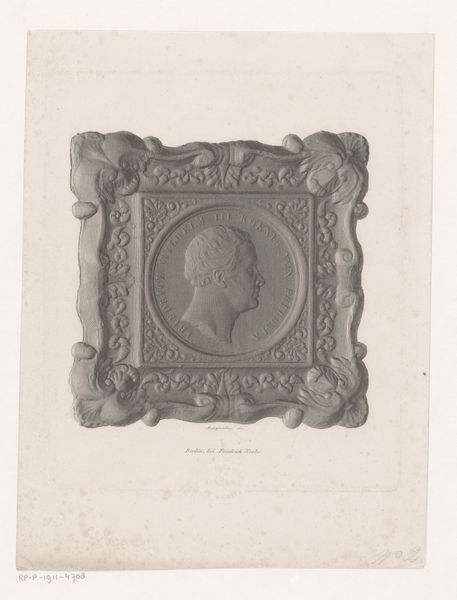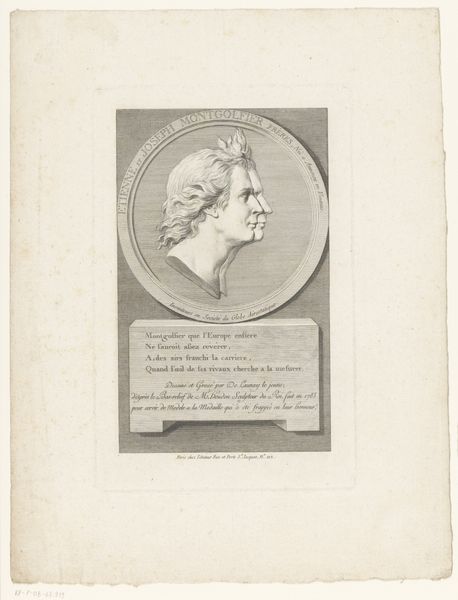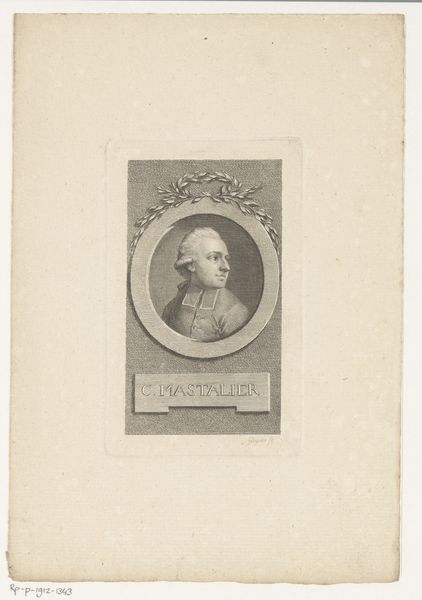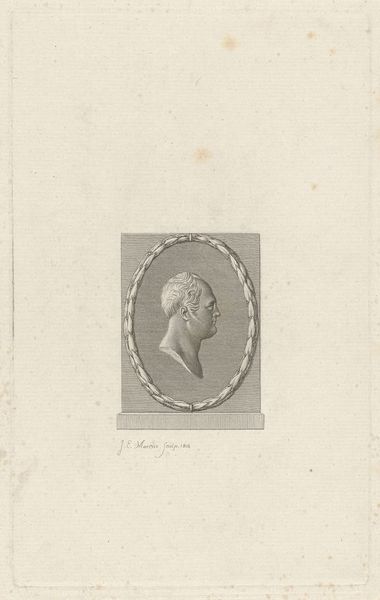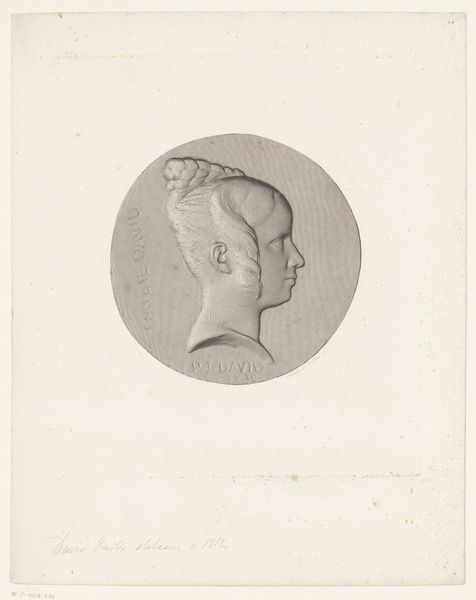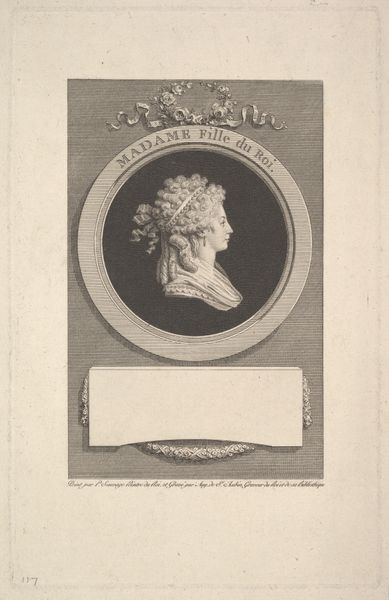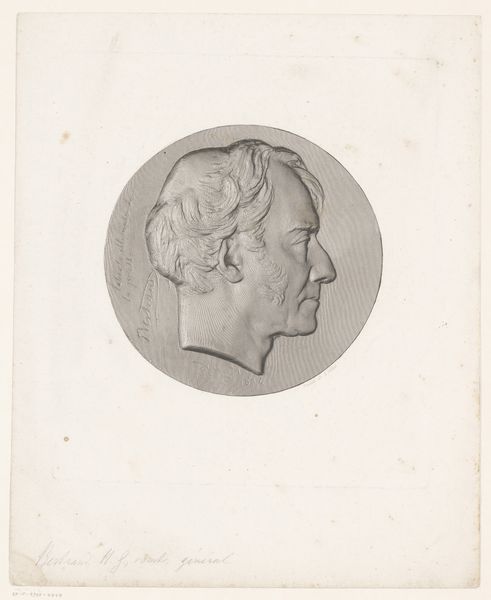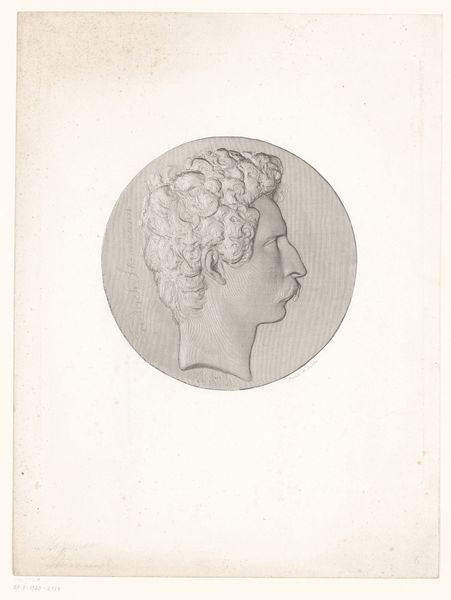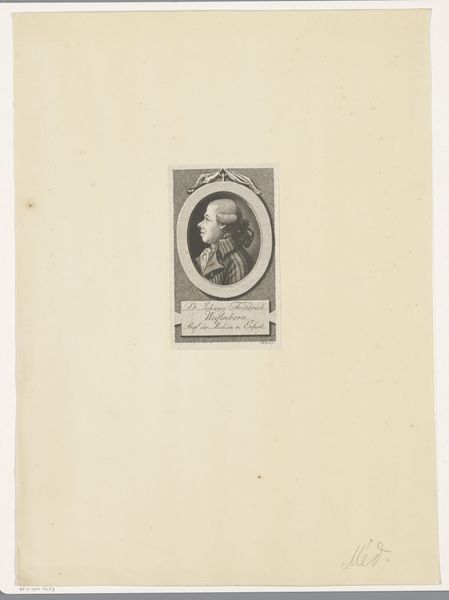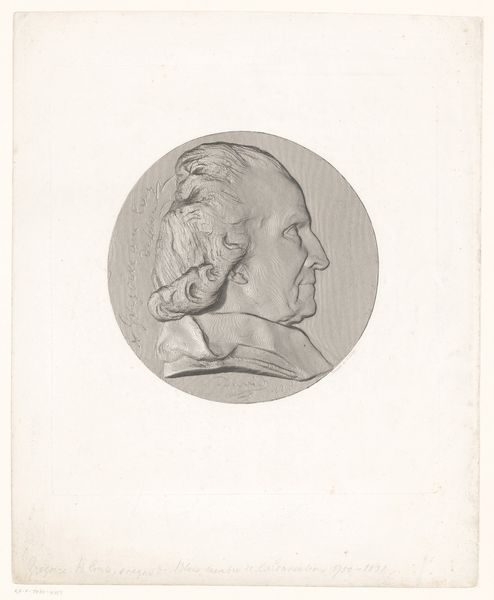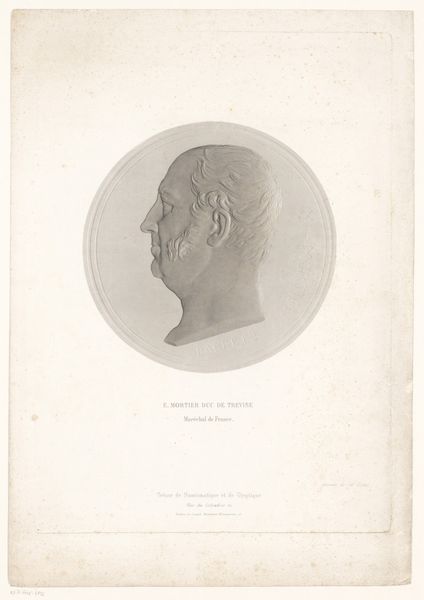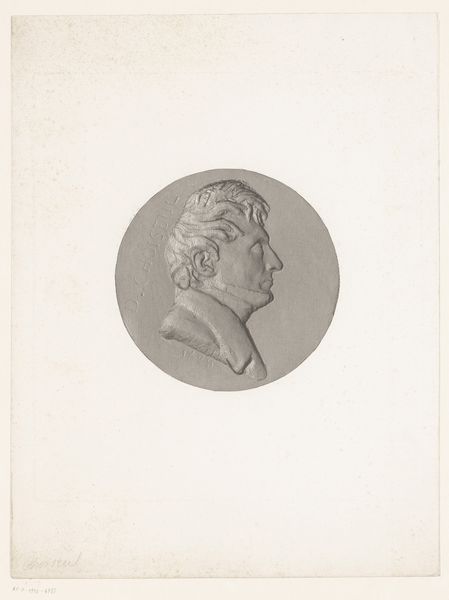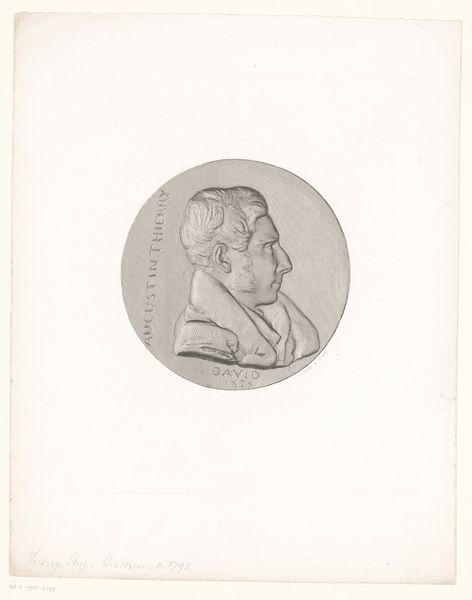
print, engraving
#
portrait
#
neoclacissism
# print
#
15_18th-century
#
history-painting
#
academic-art
#
engraving
Dimensions: height 278 mm, width 212 mm
Copyright: Rijks Museum: Open Domain
Curator: Before us, we have Johan Frederik Clemens’ 1778 print, "Portret van Abraham Trembley," currently held in the Rijksmuseum. Editor: There's an almost stark simplicity to it. The grey hues and rigid framing evoke a sense of cool detachment. It is austere. Curator: The piece is a superb example of Neoclassical portraiture rendered through engraving. Note the deliberate, clean lines defining Trembley’s profile and the precise detailing in his wig. The circular frame also enhances this austerity you mention, abstracting him within this rational, contained form. Editor: The choice of printmaking as a medium is interesting, especially for a portrait. Was it a decision based on accessibility or reproduction? It's quite a labour-intensive process to create such detail, involving etching and meticulous transfer. Was this image intended for mass distribution or personal keepsakes, shaping the image and the scientist Trembley? Curator: Indeed, the reproductive nature of engraving aligns perfectly with the Enlightenment ideals that shaped Neoclassicism. The print would allow for wider circulation of Trembley's image. But consider, too, the inherent qualities of the medium. Engraving lends itself to controlled lines, mirroring the Enlightenment's emphasis on reason. Editor: This focus on replication over uniqueness and the medium’s effect in conveying "reason" are powerful. What materials were available to Clemens at this time, and how might their sourcing and cost have influenced the stylistic choices we see? What does the image represent socially as an object? Curator: An excellent point. The material constraints undoubtedly played a role. However, look closely at how Clemens manipulates light and shadow to create volume, achieving a sculptural effect reminiscent of classical busts. It suggests the enduring influence of the Antique and Greco-Roman statuary. The portrait seeks to elevate Trembley into an icon. Editor: It is this blend of available tools and visual choices which tell us about art history as embedded labor, where material conditions shape artistic representation. Understanding that, enriches our appreciation of this printed likeness of Abraham Trembley. Curator: I find, revisiting this, it distills its subject with calculated precision and reveals underlying ideals from the past era. Editor: And, for me, its cool surface belies a world of labor and circumstance.
Comments
No comments
Be the first to comment and join the conversation on the ultimate creative platform.
